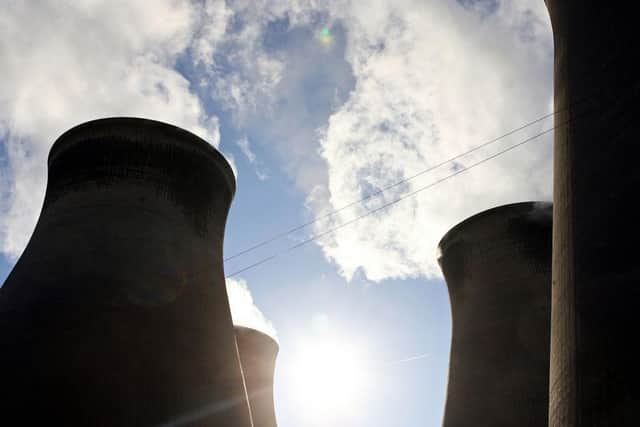Pollution in Leeds: Here are the pollution levels in Leeds this week and if they are a danger to your health
This article contains affiliate links. We may earn a small commission on items purchased through this article, but that does not affect our editorial judgement.
and live on Freeview channel 276
Air pollution is almost impossible to avoid, with household combustion devices, motor vehicles, industrial facilities and fires all contributing to pollution levels.
But how harmful are the toxic gases and particles we are exposed to each day, and what can we do to prevent them impacting our health?
Advertisement
Hide AdAdvertisement
Hide Ad

Below is everything you need to know about air pollution levels in Leeds, and how the city compares to others in the UK.
Does Leeds have safe levels of air pollution?
Leeds’ air quality meets national standards and is cleaner than many UK cities, but there are no ‘safe’ levels of air pollution.
Using data collected from Plume Labs, a pollution analytics source, we have created a graph to demonstrate how Leeds compares to other northern cities on a weekly basis.
How is air pollution measured?
Air pollution can be measured in a number of ways; one of those is by using an Air Quality Index, or AQI for short.
Advertisement
Hide AdAdvertisement
Hide AdIn order to easily communicate air pollution levels, governments and academics use an AQI to judge levels of pollution and their impact.
The more polluted the air, the higher the AQI number, and the more people it is likely to negatively affect.
What is a safe AQI level?
AQI levels that are at or below 100 are generally thought to be satisfactory.
When AQI values are above 100, the air quality is unhealthy and is likely to affect sensitive groups of people, then everyone else as the AQI value gets higher.
Advertisement
Hide AdAdvertisement
Hide AdFor more information about how the AQI levels displayed on our graph were calculated, please head to the Plume website.
How can it affect my health?
It is estimated that up to 36,000 people die early every year as a result of long term exposure to air pollution.
Poor air quality can cause or worsen a range of heart and lung diseases and it is also linked to low birth weight and reduced lung development in children.
Polluted air also disproportionately affects the most vulnerable people in our society, including young, old, and those experiencing an illness or living in poverty.
How can I keep myself safe from pollution?
Advertisement
Hide AdAdvertisement
Hide AdThere are many ways you can keep safe and lessen the impact of pollution on your health.
- Avoid exercising in areas with high levels of traffic
- Check the pollution level in your arena daily; if it is higher than 100 keep your windows shut to avoid air contamination
- Wear a mask if there are high levels of pollution
- Use less energy in your home to avoid producing more pollution
- Don't burn wood or rubbish
- Don't allow anyone to smoke indoors
Support the YEP and become a subscriber today. Enjoy unlimited access to local news and the latest on Leeds United, With a digital subscription, you see fewer ads, enjoy faster load times, and get access to exclusive newsletters and content. Click here to subscribe.
Comment Guidelines
National World encourages reader discussion on our stories. User feedback, insights and back-and-forth exchanges add a rich layer of context to reporting. Please review our Community Guidelines before commenting.
